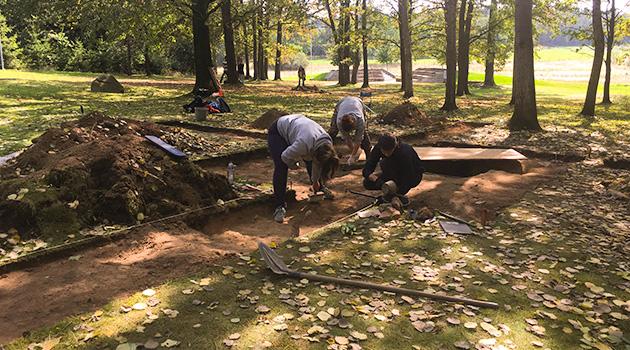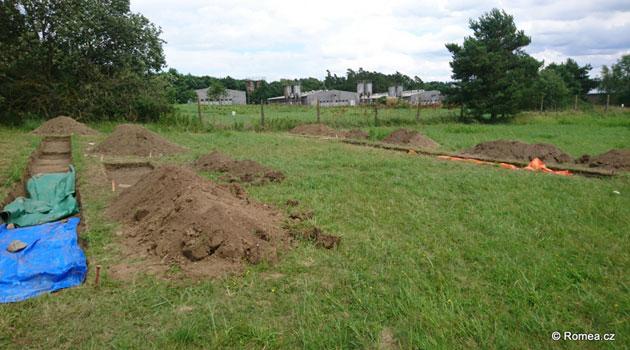Czech archaeologists discover two graves of Romani concentration camp victims at Lety u Písku

Archaeologists in the Czech Republic have found the burial sites of various individuals at Lety, where a concentration camp for Romani people functioned during the Second World War, uncovering one grave with the remains of an adult female prisoner who was not more than 40 years old at the time of her death and one grave that was probably for a newborn. Seven burial pits have been found altogether.
According to documentary sources, there were meant to have been 120 prisoners buried at that location, more than 70 of whom were children, and the burial site was said to be 400 meters square. The archaeological survey was completed last Tuesday.
Archaeologists reported on their findings to journalists and representatives of the Museum of Romani Culture, which wants to build a memorial to the Holocaust victims of Romani origin at the site of the former camp and open it by 2023. The survey has established the locations of the burial sites of the Lety camp victims.
Survey team leader Pavel Vařeka of the University of West Bohemia said they had exactly determined that what was once referred to as the “temporary” burial ground is indeed very near the existing granite memorial at Lety installed in the 1990s. “The most important thing is that after more than 70 years, we have managed to determine where the Lety camp prisoners are buried, and the significance is that relatives of the victims, not many of whom are still alive, are now finally able to know exactly where their loved ones were buried,” Vařeka said at the press conference.
“For the first time in Europe, we have succeeded in detecting burial sites for the victims of the Nazi persecution of the Roma and Sinti,” the survey team leader said. “In this respect, the Holocaust of the Roma is no longer an abstract concept, but we now have an actual, material, tangible record of the crimes that happened there.”
Some remains are buried deep in the pits, while others were interred at more shallow depths, and the scientists found just graves containing individuals in this section of the burial site. “The mass graves, according to the documentation that has been preserved, should be on the other side, toward the northeast,” Vařeka told the press.
“We have uncovered one burial site in which an adult female prisoner not more than 40 years old was interred; that grave is now covered and out of respect for the sacred nature of a grave site, at the request of the relatives and the survivors, we will not be showing you any of the remains,” the team leader said. He added that the archaeologists had uncovered just a small sample section of the area, which nevertheless now makes it possible to more exactly reconstruct it in its entirety.
The archaeologists have uncovered one grave and identified seven burial pits, and in accordance with the wishes of the relatives and survivors they will not be exhuming or surveying those remains. The deceased will remain buried where they are.
Later this month the Museum will announce an architectural competition for the design of a new memorial to the Holocaust of the Roma at Lety. The results of the contest will be announced next year, when the demolition of the pig farm that overlaps the former camp is also planned.
The memorial should begin construction in 2021, and the Museum wants to open it in 2023. According to historians, from August 1942 to May 1943, 1 308 Romani children, men and women passed through the camp at Lety, 327 of whom died there and more than 500 of whom were deported to the Auschwitz death camp.
Just 600 Romani people returned to Bohemia and Moravia from the concentration camps after the war. According to experts, the Nazis murdered 90 % of the Roma of Bohemia and Moravia.
Some of the buildings of a 7.1 hectare pig farm were erected over part of the former concentration camp at Lety in 1972. Last year the Czech state bought the farm for CZK 450.8 million [EUR 17.4 million].
